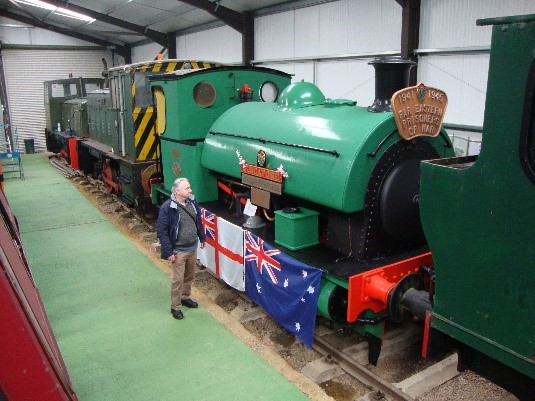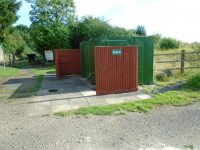Welcome to Rocks by Rail – The Living Ironstone Museum, which can be found on the edge of the Vale of Catmose in Rutland. The museum lies at the foot of the hillside where once ironstone rock outcropped at the surface and was first excavated to make iron and steel in steelworks outside of the local area.
As with most of the ironstone quarries in the East Midlands, the museum is located in open countryside. The site allows visitors ease of movement to enjoy our industrial heritage, including the railway which was used to take the excavated ironstone rock to the steelworks.
Finding and contacting us
Please feel free to contact us before your visit if you require any information regarding access and we will only be too willing to assist you in whatever way we can.
Parking
The museum has its own free car park a short walk to the museum entrance. There are two spaces reserved for visitors with limited mobility. The car park is surfaced with compacted ash ballast, providing a firm and level surface.
The Sundew Cafe
The single storey Sundew Café provides a welcome to the museum and includes some initial interpretative material to explain the heritage behind the museum. The Café also offers limited light refreshments on operational and other days as advertised; there is a small ramp over the threshold to enter the building.
The Woolsthorpe Conservation Workshop
From the patio outside Sundew Café visitors can head off to other parts of the museum. The route to the nearby Woolsthorpe Conservation Workshop is via a short level concrete path which also runs the length of the building internally. There is a small step down into the Woolsthorpe Conservation Workshop, which should be manageable for wheelchair users.
The Simon Layfield Exhibition Centre and Station Platform
To visit the Simon Layfield Exhibition Centre and Station Platform, there is a short concrete path from the Sundew Café taking you through a simple control gate to a wooden boarded crossing over the railway track. On the other side of the crossing, access to the Station Platform is via a short steep ramp. Volunteers are always willing to lend a hand to help wheelchair users or parents/carers with buggies.
The Station Platform has a level concrete surface with sensory studs along the edge. Access to the Exhibition Centre is via the far end of the platform, where a gentle ramp guides visitors down to the building access door. Inside the Exhibition Centre, parallel level concrete walkways provide a route around the various displays and the locomotive exhibits. Exiting is via the same door you entered by.

The Nature Trail and lineside walk to the Oakham Canal
There is a fenced walk from the end of the Woolsthorpe Conservation Workshop, through the wagon sidings to connect with a lineside path leading to the remains of the Oakham Canal, which was abandoned in 1840. These paths are firm when dry but are primarily grassed routes suitable for walkers, with a gradient near to the canal.
The Quarry Viewing Area and Sundew Cab
Another fenced walking route starts near the Sundew Café and goes to the Quarry Viewing area and the historic, externally refurbished, Sundew Cab. The first part of the track, past the iron ore tipping dock and quarry office, is relatively easy going. The path goes up a short, steep, slope to a higher level, then along the hedge line to the quarry viewing area. If you need assistance please let us know.
Seating
Seating is available inside the Sundew Café, outside on the adjacent patio area, on the Station Platform and in the Simon Layfield Exhibition Centre.
Wheelchairs
We have three wheelchairs available for the use of visitors whilst onsite.
Toilet Facilities

The Museum has toilet facilities for visitors, including one separate disabled toilet, a short distance away from the Sundew Café. For visitors with special needs the nearest Changing Places Toilet facility is situated in Church Street, Oakham approximately 4 miles from the museum.
Finding your way around and Ironstone Heritage displays
There is a directions board close to the museum entrance. Additionally all points of interest are shown on the site map, which visitors are given on arrival.
Public displays to aid interpretation and appreciation of our industrial past include wall mounted, large print text, information panels and scale maps. These are supplemented by scale models of quarries, their machines, locomotives, wagons and quarry workers. The museum does not have any audio displays.
Conducted Tours
Conducted tours are available by prior arrangement.
Please contact curator@rocks-by-rail.org for further details and booking.
Dogs are welcome

All dogs are welcome.
We ask that dogs be kept on a lead throughout your visit.
You will find a water bowl by the Museum entrance – if it’s empty just ask for a refill.
We hope that you will enjoy your visit to Rocks by Rail – The Living Ironstone Museum.


